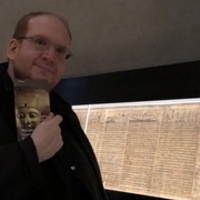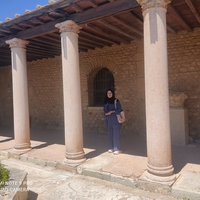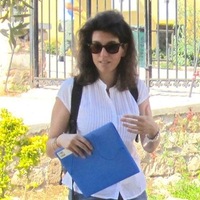Books by C. Michael Sampson

Contemporary classicists often find themselves advocating for the value and relevance of Greco-Ro... more Contemporary classicists often find themselves advocating for the value and relevance of Greco-Roman literature and culture, whether in the classroom, or social media, or newsprint and magazines. In this collection, twelve top scholars apply major critical approaches from other academic fields to open new channels for dialogue between ancient texts and the contemporary world.
This volume considers perennial favorites of classical literature—the Iliad and Odyssey, Greek tragedy, Roman comedy, the Argonautica, and Ovid’s Metamorphoses—and their influence on popular entertainment from Shakespeare’s plays to Hollywood’s toga films. It also engages with unusual and intriguing texts across the centuries, including a curious group of epigrams by Artemidorus found on the island sanctuary of Thera, mysterious fragments of two Aeschylean tragedies, and modern-day North African novels. These essays engage an array of theoretical approaches from other fields—narratology, cognitive literary theory, feminist theory, New Historicist approaches to gender and sexuality, and politeness theory—without forsaking more traditional philological methods. A new look at hospitality in the Argonautica shows its roots in the changed historical circumstances of the Hellenistic world. The doubleness of Helen and her phantom in Euripides’ Helen is even more complex than previously noted. Particularly illuminating is the recurrent application of reception studies, yielding new takes on the ancient reception of Homer by Apollonius and of Aeschylus by Macrobius, the reception of Plautus by Shakespeare, and more contemporary examples from the worlds of cinema and literature.
Students and scholars of classics will find much in these new interpretations and approaches to familiar texts that will expand their intellectual horizons. Specialists in other fields, particularly English, comparative literature, film studies, and gender and sexuality studies, will also find these essays directly relevant to their work.
Articles by C. Michael Sampson
Trends in Classics, 2023
An analysis of the early history of digging at Kom Aushim and the Museum archaeology of Karanis p... more An analysis of the early history of digging at Kom Aushim and the Museum archaeology of Karanis papyri purchased on the Egyptian antiquities market is combined with archaeological data from the University of Michigan's excavations to locate purchased papyri in the archaeological record.
Pylon, 2022
An analysis of the papyri acquired by David G. Hogarth (1862–1927)
Pylon, 2022
Re-edition of P.Mich. 15 686, with analysis of the papyrus' archaeological context.
A Companion to Greek Lyric, 2022
Zeitschrift für Papyrologie und Epigrafik, 2020
Bulletin of the American Society of Papyrologists, 2020
The analysis of a recently surfaced Christie’s brochure proposing P.Sapph.Obbink for private trea... more The analysis of a recently surfaced Christie’s brochure proposing P.Sapph.Obbink for private treaty sale calls into question the published accounts of the papyrus’ provenance.
Bulletin of the American Society of Papyrologists, 2019
An edition of a first-century Tebtunis papyrus containing a letter from the receivers of public c... more An edition of a first-century Tebtunis papyrus containing a letter from the receivers of public clothing, with analyses of both this liturgical office as well as the practice of compulsory sale for the supply of military clothing.

Mouseion, 2018
This article considers the form(s) in which moral advice is expressed in lyric and the context(s)... more This article considers the form(s) in which moral advice is expressed in lyric and the context(s) in which it is performed, with an eye to addressing the complications that invariably result. Advice in archaic lyric, it argues, is crafted to defy a straightforward interpretation: whether a poet proceeds directly or indirectly, triangulation of some sort is inevitable. Moralizing strategies complicate the poet–audience binary by introducing additional, mediating material or perspectives whose relationship to the advice at stake is inherently ambiguous. Advice presented indirectly via comparanda or mythological exempla, for example, adds to the point being made, while a more direct form of address gestures toward both universal maxim and particular addressee(s). A hermeneutics of reception must therefore acknowledge the interpretive work that is left to a poem’s audience(s) and account for the poetic tendency simultaneously to compare and to complicate. The paradox is that however much these strategies project their transparency, the content (i.e., advice) is nonetheless obfuscated.
This paper considers how Aeschylus dramatizes the memory of his Persian characters, and argues th... more This paper considers how Aeschylus dramatizes the memory of his Persian characters, and argues that the contradictory recollection of Marathon in Persae reflects an imperial ideology with which failure is incompatible: the dramatis personae frame Xerxes’ defeat at Salamis as unprecedented even as they summon Darius as a semi-divine benefactor. With recourse to what historians and anthropologists term “social” or “collective” memory, the paper then considers how such a portrayal of Persian memory would have resonated before an Athenian audience in 472 engaged in democratic debate over the nature of the burgeoning Delian League.
Edition of a sixth-century Oxyrhynchite labor contract between four πεδιοφύλακες from Terythis an... more Edition of a sixth-century Oxyrhynchite labor contract between four πεδιοφύλακες from Terythis and their employer, the landowner Flavius Serenus. The papyrus belongs to the dossier of Flavius Eulogius and his descendants.
Bulletin of the American Society of Papyrologists 51 (2014): 59-67
A fourth-century account from the Michigan collection that is argued to have originated in Karani... more A fourth-century account from the Michigan collection that is argued to have originated in Karanis and dated to 351/352 CE
The recent publication of a Michigan papyrus provides the ancient witness for Hermann's 1841 emen... more The recent publication of a Michigan papyrus provides the ancient witness for Hermann's 1841 emendation.
Reanalysis of a fragment of Aeschylus ascribed by Sommerstein to the prologue of Palamedes.
Bulletin of the American Society of Papyrologists 50 (2013): 165-169
Edition of a Late Antique receipt from the Michigan collection (P.Mich. inv. 3306).
Bulletin of the American Society of Papyrologists 50 (2013): 145-152
Edition of a fifth-century document from the Michigan collection with a number of unusual features.










Uploads
Books by C. Michael Sampson
This volume considers perennial favorites of classical literature—the Iliad and Odyssey, Greek tragedy, Roman comedy, the Argonautica, and Ovid’s Metamorphoses—and their influence on popular entertainment from Shakespeare’s plays to Hollywood’s toga films. It also engages with unusual and intriguing texts across the centuries, including a curious group of epigrams by Artemidorus found on the island sanctuary of Thera, mysterious fragments of two Aeschylean tragedies, and modern-day North African novels. These essays engage an array of theoretical approaches from other fields—narratology, cognitive literary theory, feminist theory, New Historicist approaches to gender and sexuality, and politeness theory—without forsaking more traditional philological methods. A new look at hospitality in the Argonautica shows its roots in the changed historical circumstances of the Hellenistic world. The doubleness of Helen and her phantom in Euripides’ Helen is even more complex than previously noted. Particularly illuminating is the recurrent application of reception studies, yielding new takes on the ancient reception of Homer by Apollonius and of Aeschylus by Macrobius, the reception of Plautus by Shakespeare, and more contemporary examples from the worlds of cinema and literature.
Students and scholars of classics will find much in these new interpretations and approaches to familiar texts that will expand their intellectual horizons. Specialists in other fields, particularly English, comparative literature, film studies, and gender and sexuality studies, will also find these essays directly relevant to their work.
Articles by C. Michael Sampson
This volume considers perennial favorites of classical literature—the Iliad and Odyssey, Greek tragedy, Roman comedy, the Argonautica, and Ovid’s Metamorphoses—and their influence on popular entertainment from Shakespeare’s plays to Hollywood’s toga films. It also engages with unusual and intriguing texts across the centuries, including a curious group of epigrams by Artemidorus found on the island sanctuary of Thera, mysterious fragments of two Aeschylean tragedies, and modern-day North African novels. These essays engage an array of theoretical approaches from other fields—narratology, cognitive literary theory, feminist theory, New Historicist approaches to gender and sexuality, and politeness theory—without forsaking more traditional philological methods. A new look at hospitality in the Argonautica shows its roots in the changed historical circumstances of the Hellenistic world. The doubleness of Helen and her phantom in Euripides’ Helen is even more complex than previously noted. Particularly illuminating is the recurrent application of reception studies, yielding new takes on the ancient reception of Homer by Apollonius and of Aeschylus by Macrobius, the reception of Plautus by Shakespeare, and more contemporary examples from the worlds of cinema and literature.
Students and scholars of classics will find much in these new interpretations and approaches to familiar texts that will expand their intellectual horizons. Specialists in other fields, particularly English, comparative literature, film studies, and gender and sexuality studies, will also find these essays directly relevant to their work.